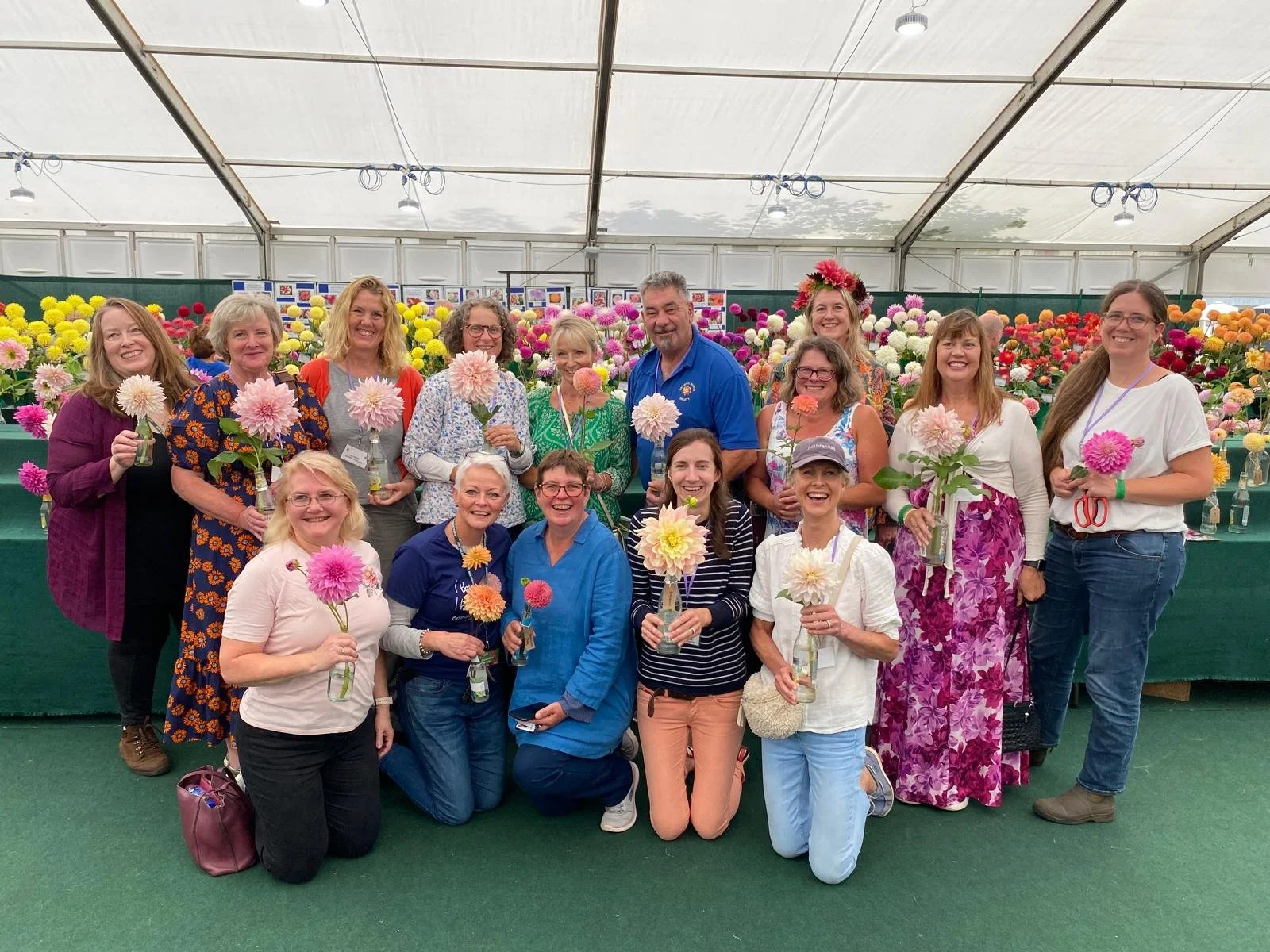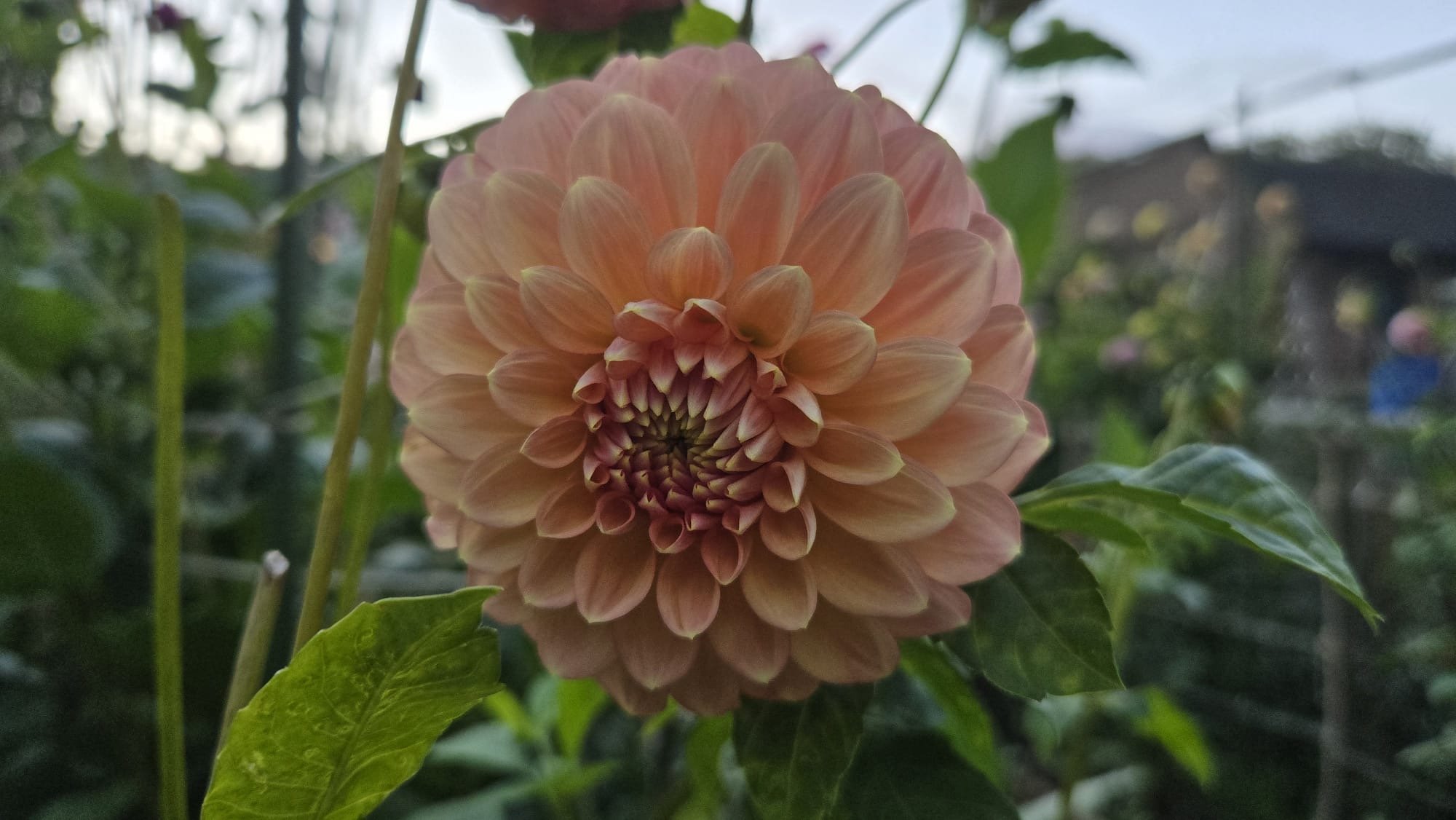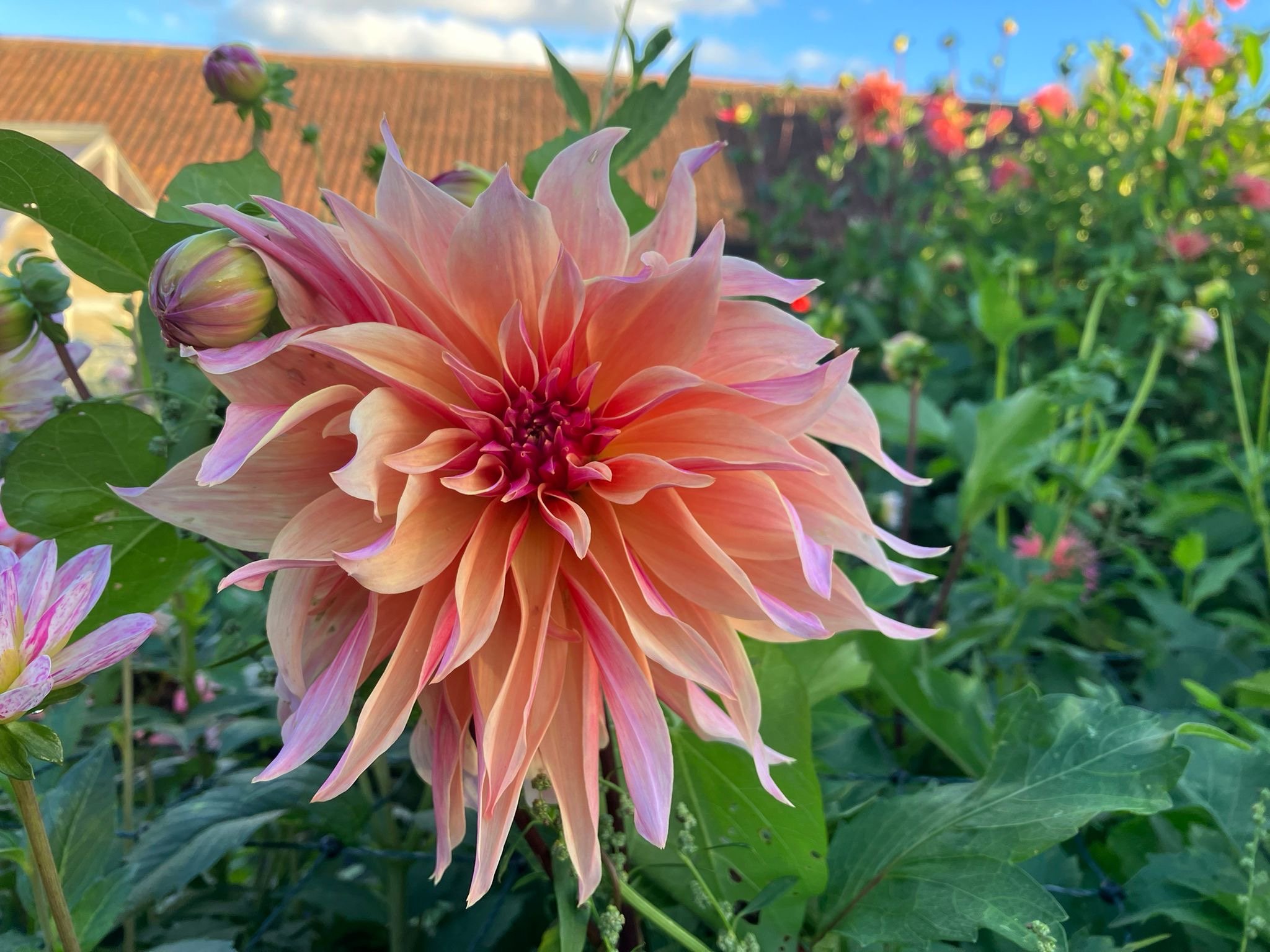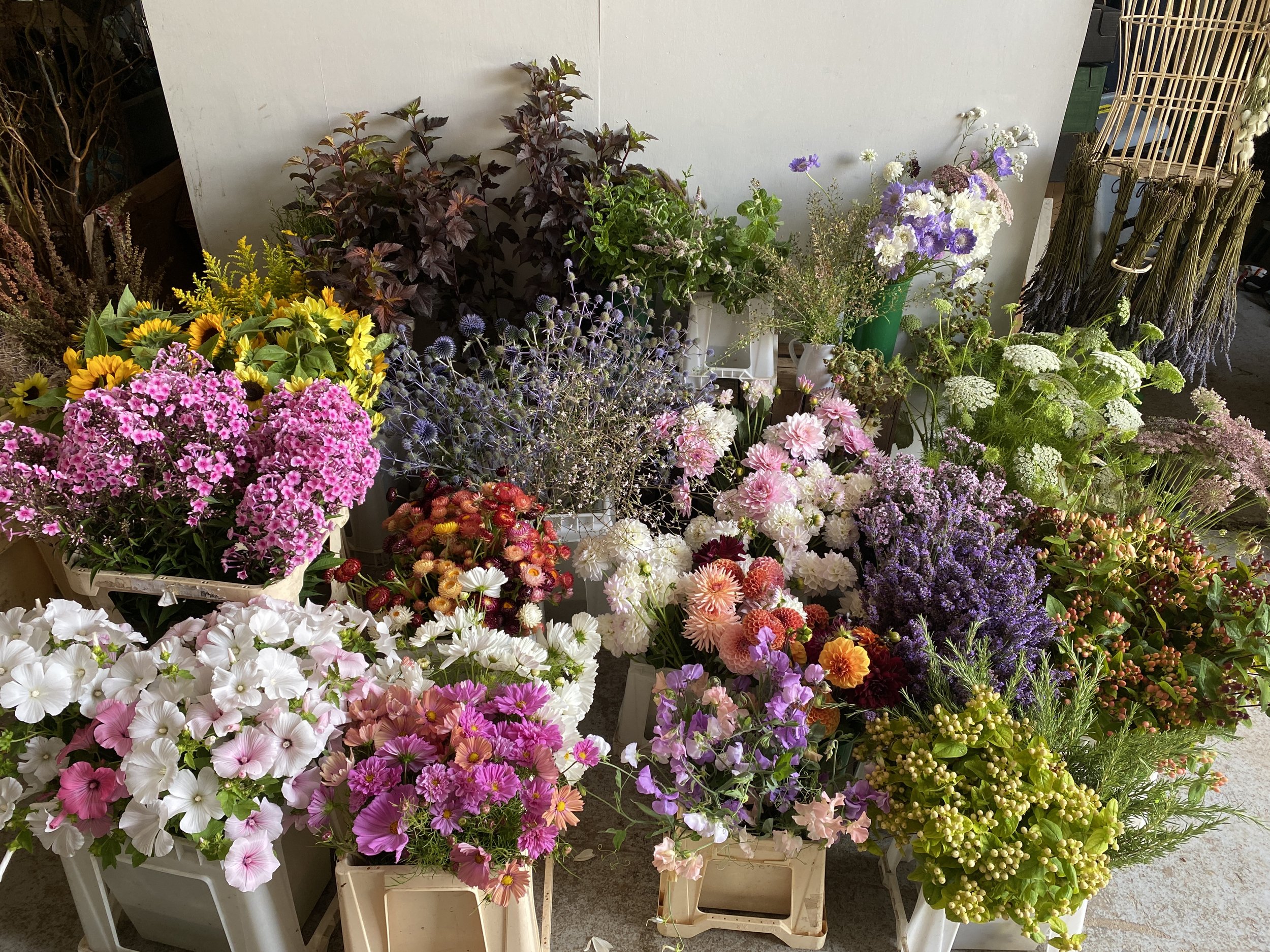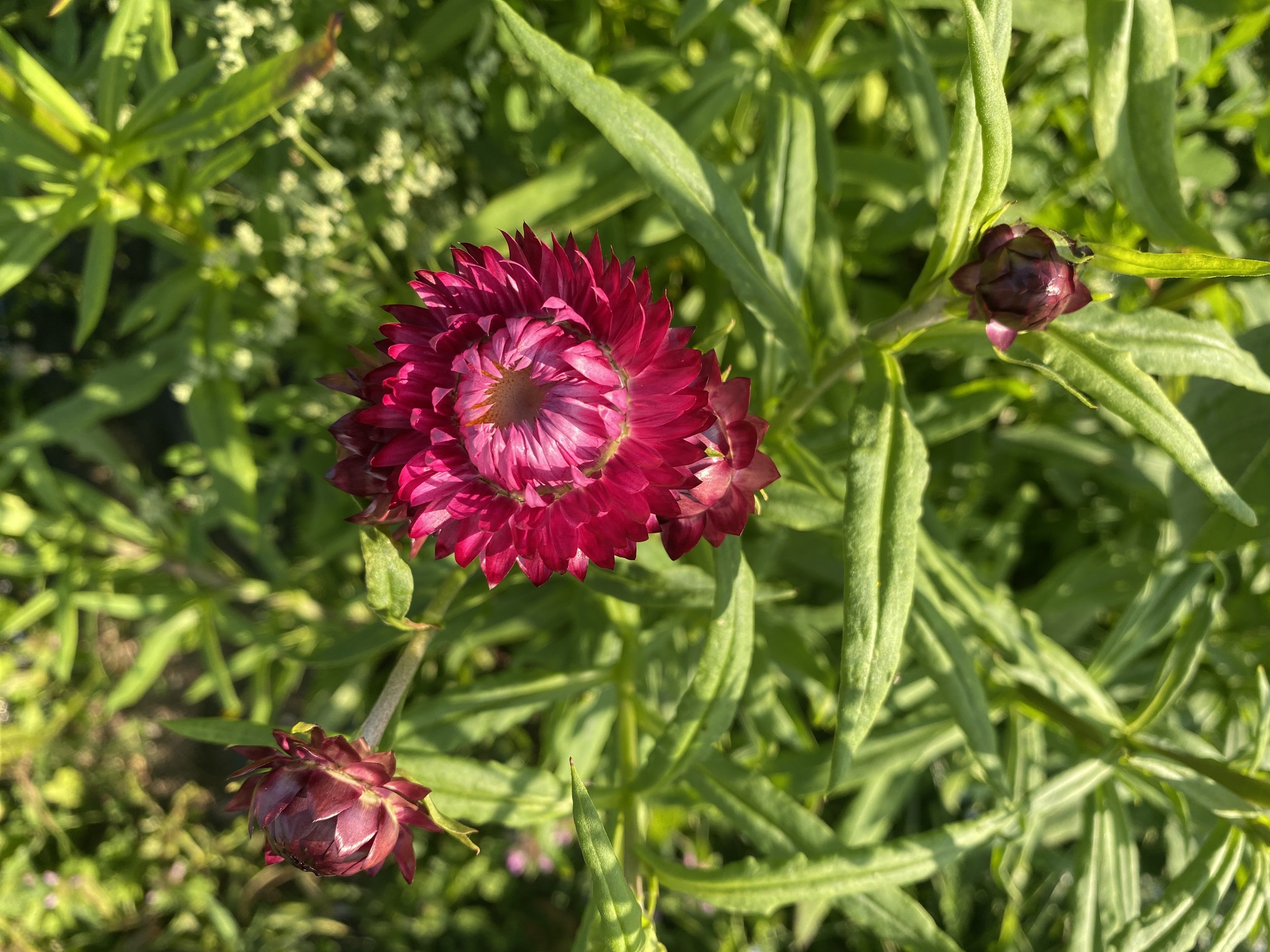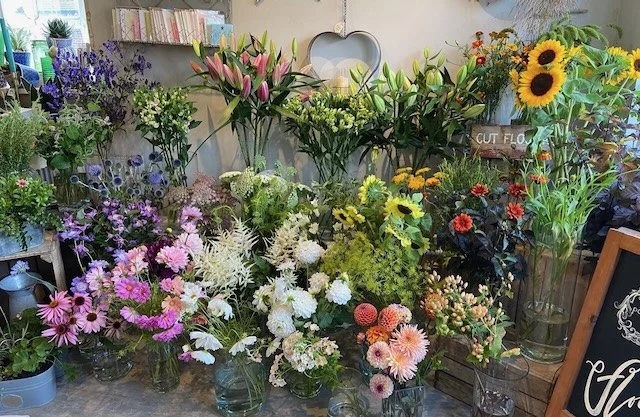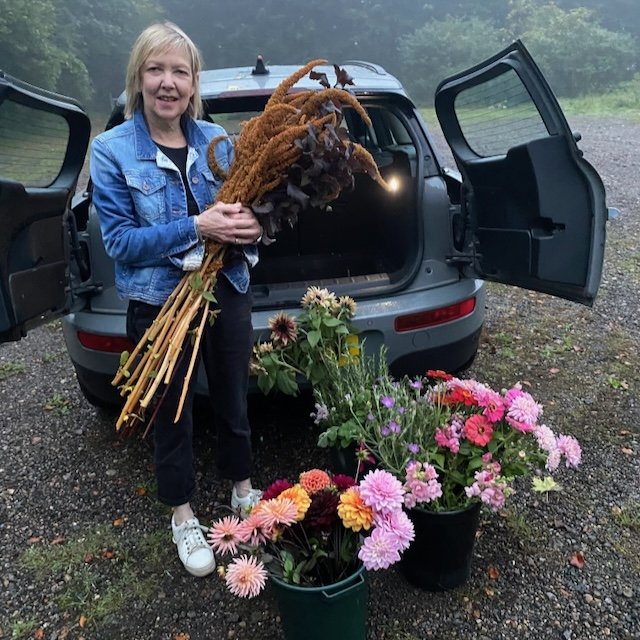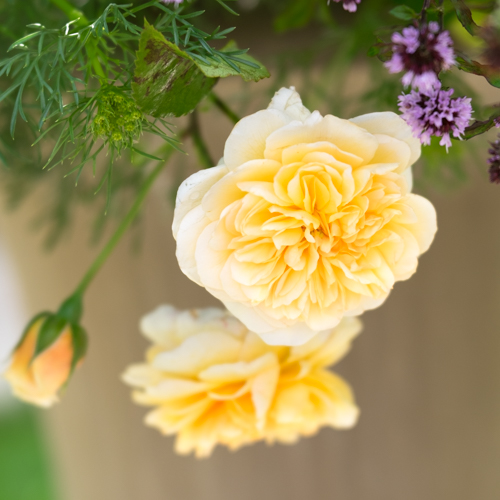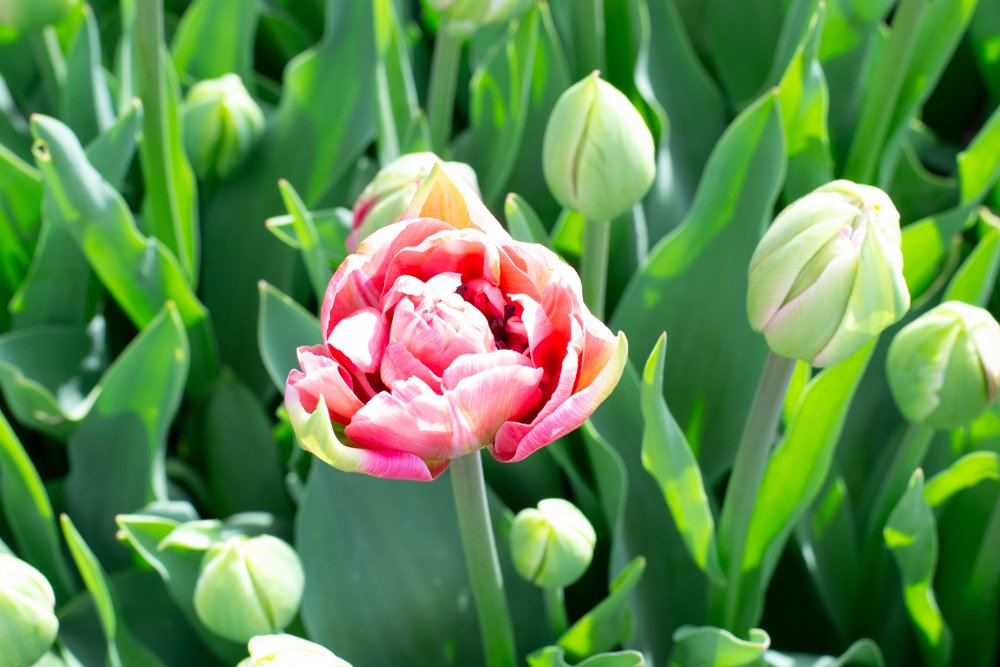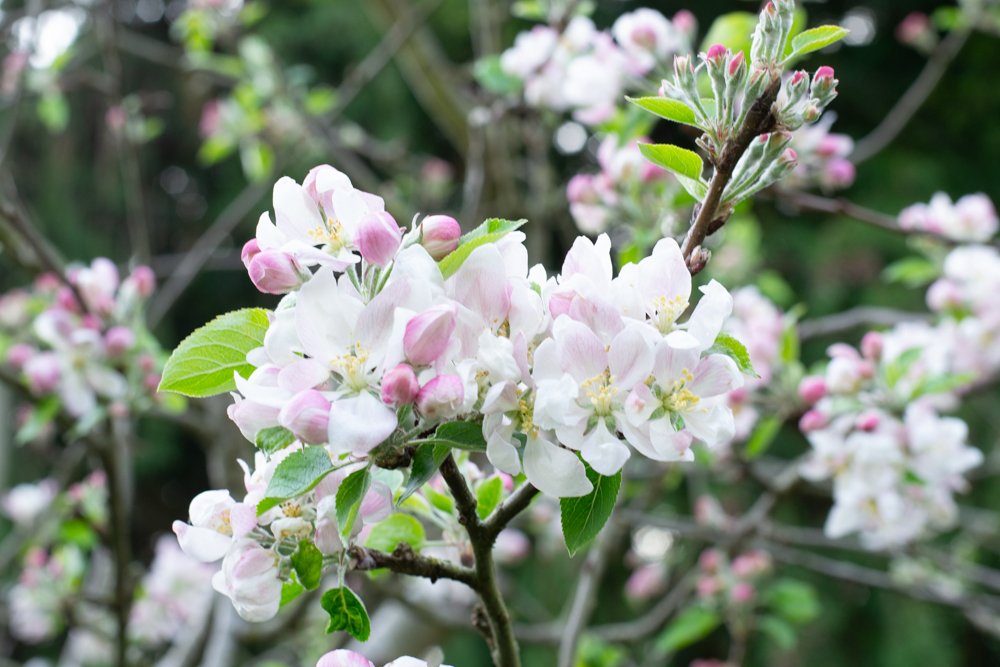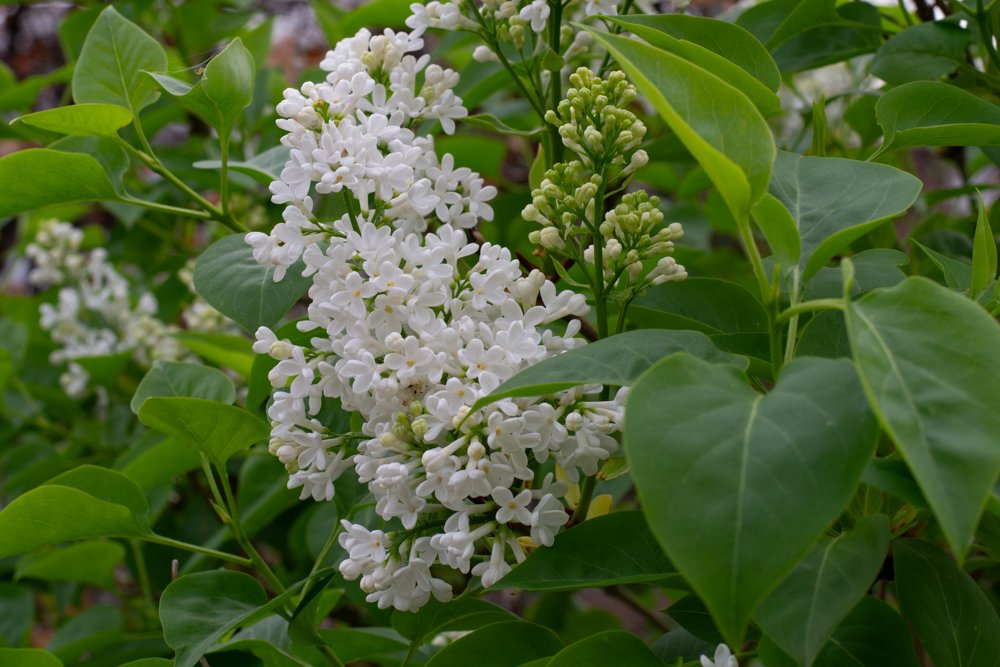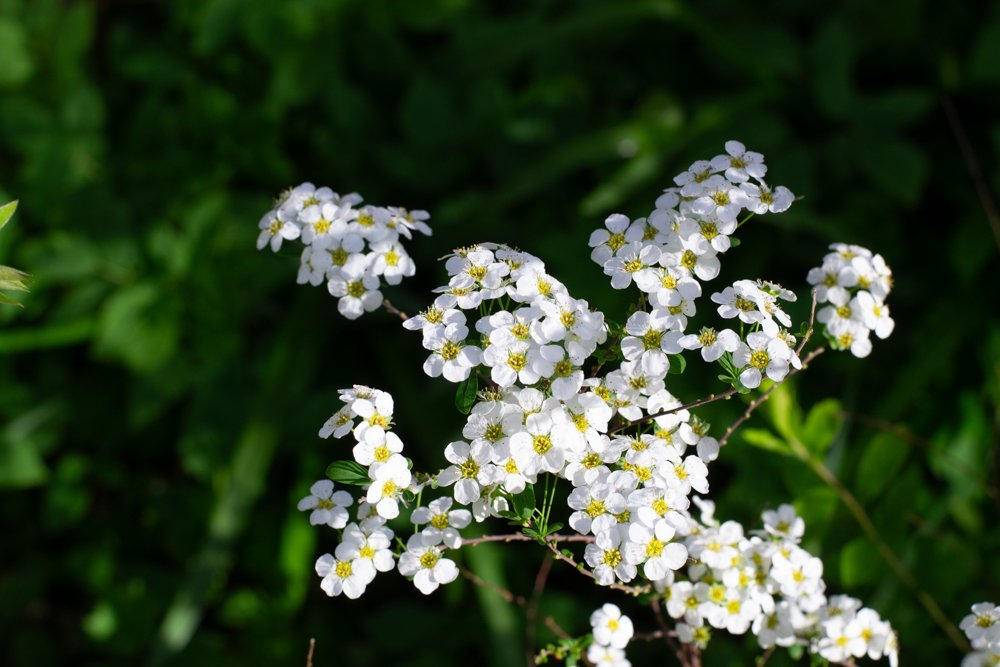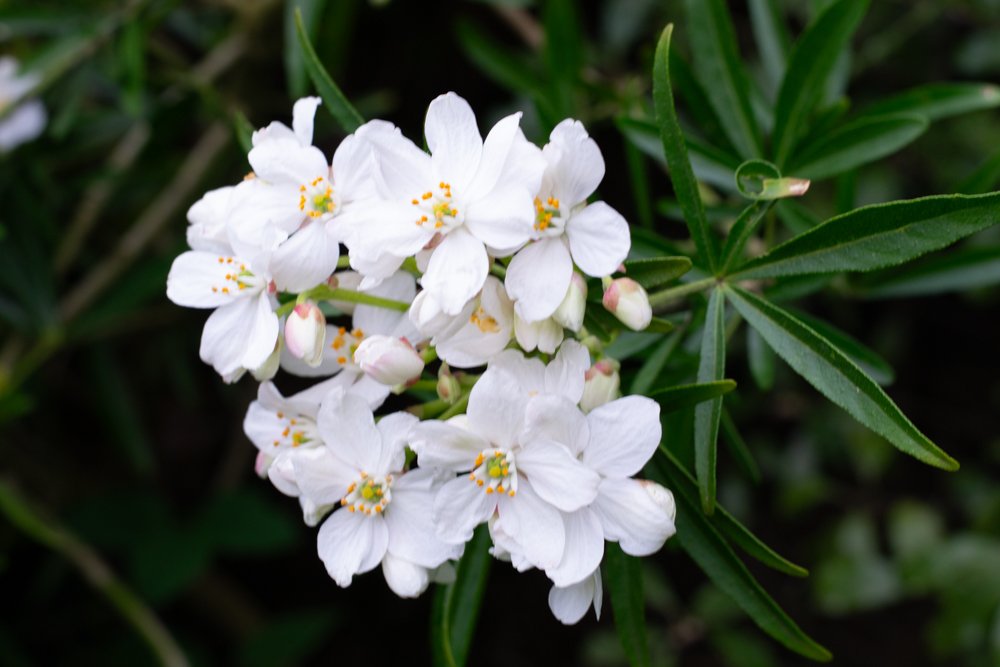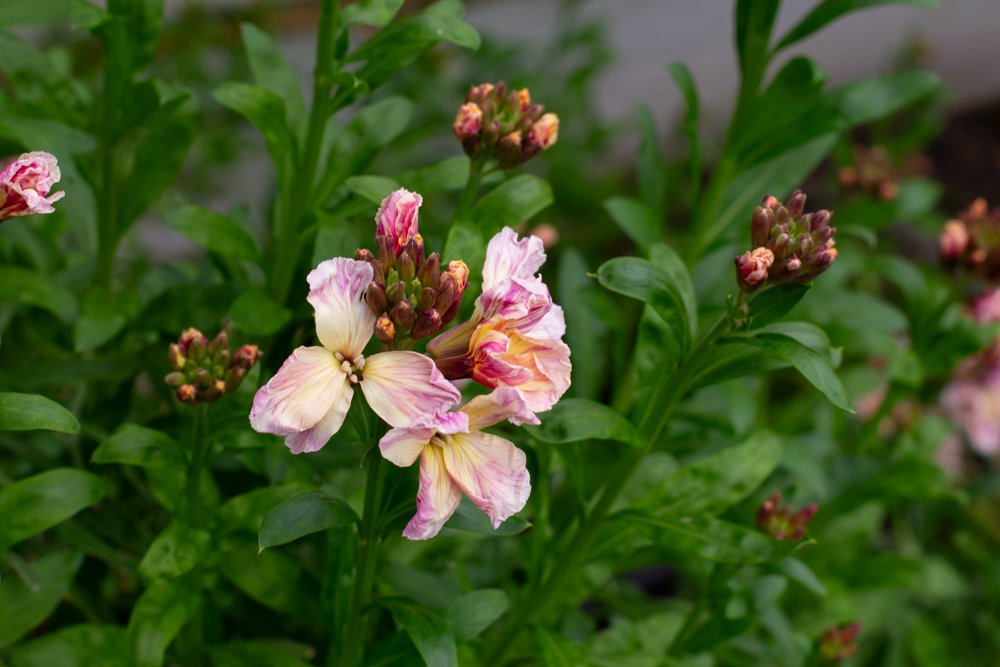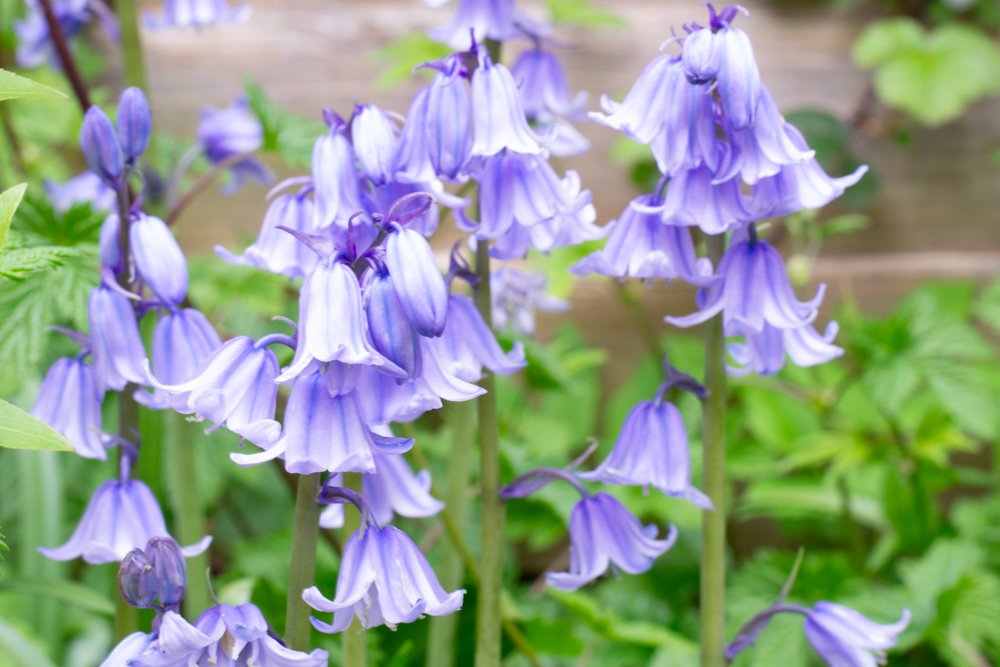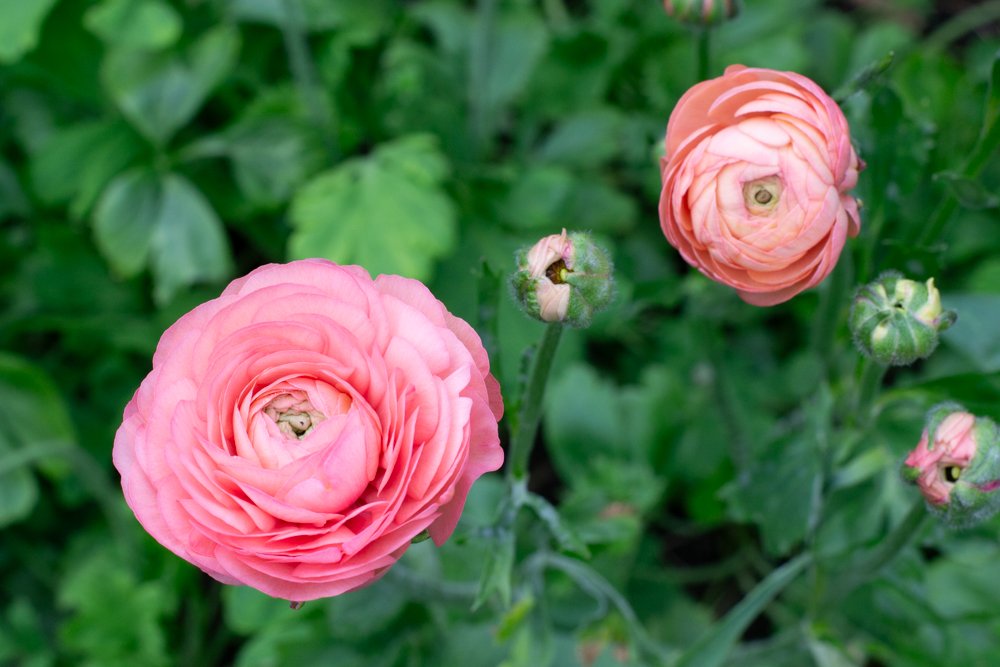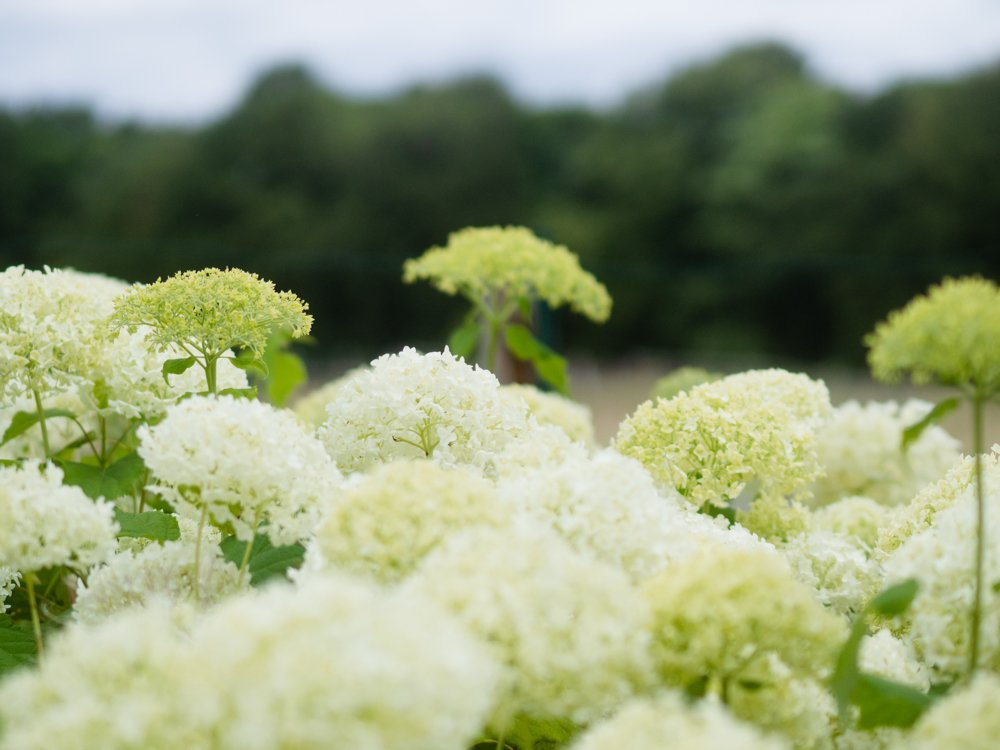
BLOG
Dahlia growers favourite blooms for cutting
The Dahlias that the experts recommend for growing for cutting
The Best Cutting Varieties from RHS Wisley
At this year’s National Dahlia Society show at RHS Wisley Garden, I joined a group of professional growers and expert amateurs in showcasing their favourite dahlias—varieties not just for the exhibition bench, but also perfect for cutting gardens.
While the NDS often celebrates exhibition varieties, The weekend of the show was all about the Garden varieties, and I asked this team which ones they’d found over the years to be both stars of the show and dependable performers in any flower garden and vase, and the reasons why they chose them. I have to say that this is a pretty solid collection if you want to sell your dahlias for floristry and enjoyment.
Team Dahlias at RHS Wisley show 2024 - photo by John Williams
Philippa from Just Dahlias – 'Caroline Wagermanns'
For Philippa at Just Dahlias, the 'Caroline Wagermanns' dahlia stands out. Known for its stunning shape and its ability to dry beautifully, this variety is perfect for arrangements that go beyond the garden.
Ali Kesson from Small Garden Life & Liz Appleby – 'Château de la Bourdaisière'
Ali and Liz are both enamoured with 'Château de la Bourdaisière'. Ali says, "It’s a dahlia that’s both beautiful and prolific, with long stems and an amazing dusky apricot hue." This one is ideal for creating elegant arrangements with a soft, sophisticated touch. -having seen how it held up over the weekend of the show, it’s on my list to get next season.
Liz Frost from Surrey Dahlias – 'Wine-Eyed Jill'
Liz Frost’s favourite is 'Wine-Eyed Jill', which is always the first to flower in her garden. What makes it stand out is how its colours change throughout the season, giving a dynamic look to any arrangement, with a pink touch earlier in the season, and the picture below showing the Autumnal shades.
Sarah Williams – 'Cornel Brons'
Sarah loves the strong presence of 'Cornel Brons', a dahlia that excels in both form and colour. "I adore its perfection of colour," Sarah says, "and it looks fantastic in any bouquet."
Cornel brons
Natalie from Pinks Cottage Flowers – 'Wizard of Oz'
'Wizard of Oz' is Natalie’s pick for its soft, pastel pink blooms. "It’s a prolific flowerer," she shares, making it perfect for florists who want to keep their arrangements full and fresh throughout the season.
Sandra Field from Field Flower Farm – 'Sandra' Dahlia
Sandra Field of Field Flower Farm has a special connection to her namesake dahlia, 'Sandra'. " It has incredibly long stems, and as a ball dahlia, it lasts really well, even during transportation in the van."
Claire Brown from Plantpassion - ‘Evelyn"‘
I’m a big fan of Evelyn. It grows large, so crowds out the weeds, it starts flowering early, it goes with lots of colours so it’s popular for weddings, but is also great for bouquets. All of this means that it’s one of my most profiable. What’s not to love?
Sophie Jones – 'Linda’s Baby' and 'Hamari Rose'
Sophie finds it hard to choose between two stunning dahlias: 'Linda’s Baby' and 'Hamari Rose'. She loves both for their striking colour, form, and impressive vase life.
Linda's Baby (Photo by Liz Frost)
Vanessa Penn – 'Labyrinth'
Vanessa is captivated by 'Labyrinth', a dahlia known for its stunning colour, which complements its bronze leaf foliage. "The form and colour are just lovely," Vanessa says, and it’s easy to see why this one is a favourite.
Richard – 'Kidd’s Climax' and 'Peppermint Splash'
Richard is drawn to 'Kidd’s Climax' for its bold colour and great stem length, while 'Peppermint Splash' stands out for its unique variations in colour. Both add a touch of excitement to any floral display.
Claire Parkes from Green Barn Flowers – 'Megan Dean'
Finally, Claire Parkes recommends 'Megan Dean' for its excellent stem length and lovely colour. This variety is a wonderful choice for creating long-lasting, striking arrangements.
Each of these dahlias has its own special qualities, and they’ve certainly earned their place as favourites in our gardens, and in the vase. Whether you’re looking for vibrant colours, long-lasting blooms, or unique forms, there’s a dahlia out there that will capture your heart and bring beauty to your home or business.
What's available from flower farms in the UK in September
What’s available from UK Artisan flower farmers in September
September is the month that Dahlias are in their prime, Half hardy annuals are continuing to pump out vast numbers of stems and are great for drying, and Grasses give movement and texture
September is a month for colour, and with the summer holiday season finishing, sales can be brisk. Weddings are still happening, and the schools are back to routine. As growers, it’s worth having new batches of annuals coming on line this month to keep things fresh. As florists, there are a new and wider range of textures to work with.
As September progresses, the paler colours become less easy to find. and the colours get Autumnal, however some of the things that might be associated with Autumn are actually at their peak at the beginning of the month, like Blackberries, Hawthorn berries and Hypericum berries.
Here are some of the best annuals for this month here at Plantpassion
Multiple stems of Callistephus (Aster), Zinnias in all shades, Rudbeckia Sahara, and Nicotiana
There are still Perennials waiting to join the show, with Sedums (Hylotelphium) Perennial Asters and Anemones and Grasses also now at their peak. These particularly Miscanthus are wonderful for movement and height in displays and bouquets.
Also looking good in September, Amaranth’s, Sunflowers, Dill and Fennel, Ammi Visnaga, Daucus Dara, Monarda, Frosted Explosion Grass, Orach, and Dahlias in every colour.
The Florist interview - Sarah Diligent of Floribunda Rose
The Florists interview - Sarah from Floribunda Rose talks about using British flowers only all year round.
Can you tell us a bit about you and your business?
I’m Sarah, of Floribunda Rose florists, which is just celebrating its 10th Anniversary. I’m the founder of a flowers school based in Hampshire, teaching workshops about using sustainable mechanics and local flowers. And we create flowers for weddings and events across the UK. I’m also Co author of the guide to floral mechanics, with my Partner William Mazuch.
Who do you buy your British flowers from? and are all the flowers you use British?
Yes, we only use British flowers, all year round, and so our customers come to us knowing that. In the winter we still flower weddings, and 50th Birthday parties and lots of things at Christmas. We loved taking part in the winter flowers week at the Garden Museum.
We have a network of trusted growers all over the South east which is where we mainly work, including Featherstones, Lower Norton farm, Bramshill flowers, The Real Flower company, Usk Valley roses, Smith and Munson, Flowers from Clowance. and New Covent Garden Market.
Flowers in this December installation included Viburnum bodnantense, Daphne, Winter flowering honeysuckle, clematis and jasmine, Hellebores, Paperwhite Narcissus, Camellia, Cyclamen, Rose lilies, Chrysanthemum, Ivy, Spindle berry and the very last of the garden roses
Who’s your ideal customer?
The Ideal flower school customer is a florist who is used to using floral foam and importing all their flowers, but is curious about changing over to sustainable methods, and comes to us to learn how. They then realise British flowers are more beautiful and incredible, great as a 1st option, so they become a new convert. Our Wedding and event customers love flowers, but probably don’t know much about them. They trust us to find the most beautiful flowers in season in their colour palette.
What changes have you seen in the last 6 years (since the British flowers book was published)
Over the last 6 or 7 years, we’ve been far more proactive about letting customers know we are only using British flowers. Because that is stated, our customers know before they start the conversation with us. Which means that instead of asking if they can get locally grown, they want to know what is possible. What does that mean for them? This means they can be educated about what grows, and so they are more curious about where the flowers are coming from. We’ve also been asked in the last 2 or 3 years for plastic free weddings.
What’s your suggestion for what your customers will want from British growers in the next few years?
Our Enquiries for 2025 2026 are mostly delicate pastels and muted tones with pops of colour, some reds and burnt umber . Vessels that are tied in to the design that are more personal. People are wanting flower heavy with less foliage, and smaller more delicate bouquets.
Sarah can be found At Floribunda Rose, or @floribundaroseflorist on Instagram
The Guide to Floral Mechanics can be found Here
Whatever the weather, the flower show goes on
Whatever the weather there are blooms needed. So here are some suggestions to help mitigate for some of our dramatic climatic situations.
The one thing that being in the Horticultural industry for 32 years, and a Flower farmer for 11 has taught me, is that you can’t control the weather.
With Climatic conditions changing, and extremes of weather of all kinds expected this is going to affect farmers more and more, and yet, the show must go on, if our businesses are to be sustainable as flower farms, and if our florists are going to trust us to provide blooms.
Here are 4 ways that flower farmers are already helping to mitigate weather extremes to ensure there are some blooms whatever the weather.
1) Planting more perennials
Perennials stay in the ground from year to year, and so often have deeper root systems than Annuals, meaning they can find water for themselves. By finding out which Perennials will grow well on your soil, and are suited to your conditions, you can have flowers even in drought. Rachel Siegfried’s excellent The Cut Flower Sourcebook - Exceptional perennials and Woody plants for cutting gives lots of ideas for what might work for you.
2) Planting hedges
Conveniently, lots of hedging plants are also great foliage or even flowers for cutting. Beech, Pittosporum, Privet and Viburnum plus conifers, are mainstays of field foliage, and also protect crops from the prevailing winds. By siting polytunnels and greenhouses behind hedges too, storm damage can be minimised. Fence panels are a lot likely to be blown into the next field.
3) Having a diverse set of crops
This is obviously the complete opposite to how farming has been mostly carried out for the last 50 years. A large mono crop has benefits of economies of scale. But the downside of that is that if you only have one crop, and it is ruined by the weather, that’s it for the year, all your harvest and profit ruined. By growing many crops alongside each other not only are you able to harvest all through the season, but Wind, drought or torrential rain, will tend to only destroy some, not all of your year’s work.
4) Undercover Space
and lastly, to prevent too many losses, undercover space is at a premium. Whether that’s extra greenhouses for propagation, Polytunnels or Glasshouses for growing in or Commercial structures for protection, some undercover space is going to be needed for extending the season, and protecting crops from damage particularly from rain.
What's available from Artisan flower farms in the UK in August
What’s available from UK Artisan flower farmers in August
August is the month that Half Hardy annuals provide bulk and colour, and the Dahlias take over as the focal flower.
August is a month for colour and plenty on the flower field. Even new fields with limited foliage and perennials will have plenty at this time of the year. This video was from here at Plantpassion in Surrey in 2017
This photo is today, beginning of August 7 years after the video was made. So we have far more perennials, like Solidago, Phlox, Eryngium and Echinops. Plus shrubs like Hypericum and Physocarpus.
Multiple stems of Zinnia, Monarda, Cosmos and Amaranthus give different shapes and textures.
August is also the time to be drying flowers for late Autumn and winter sales. The Strawflowers, are great at keeping their colours, and come in a wide range of shades of pink, peach, and red.
The Florist interview - Dawn Antingham of Poppies and Peonies in Horsell
The Florists interview - Dawn from Poppies and Peonies in Horsell, Woking, tells how she uses British flowers in her boutique florist shop
Can you tell us a bit about you and your business?
I’m Dawn, and i’ve been a florist at my shop in Horsell near Woking for 9 years. We’re a small shop at the end of a parade of mixed businesses. We sell bouquets and plants to walk- in customers, for online sales and for telephone sales. We do events, - Weddings and Funerals locally in the Woking area.
Who do you buy your British flowers from? and what proportion of the flowers in your shop are British?
I buy from Claire at Plantpassion, Andy at the Chobham flower farm, and Smith and Munson. About 50-60% of our flowers are British in the main season. We would like to make it more.
Who’s your ideal customer?
One i’ve nurtured over the years, who was very entrenched with what was “expected” from the Dutch, and who now is delighted with seasonal British blooms. We have regulars who know when our deliveries from the British will be in and come looking for what’s new and interesting
What changes have you seen in the last 6 years (since the British flowers book was published) in what you are buying and what you’ve seen from growers?
More choice, a wider range of what’s available - Foliage as well as flowers, more quantity and more flowers farms. When I started nine years ago, I know nothing about British (what I could get hold of ) so now I feel it is better promoted.
What do you think you and your customers will want from British growers in the next few years?
Quality and choice, and ideally all through the year, our customers want British all the time.
Dawn can be found At Poppies and Peonies, or @poppiespeonies on Instagram
The Grower interview - Carol Siddorn of Carol’s Garden Cheshire
Carol Siddorn from Carol’s Garden is an experienced grower in Cheshire. Here she gives her views about how the flower market has changed for her, and what she expects from the coming years
Who are you, and where do you grow?
I’m Carol Siddorn, of Carol’s Garden, in the South West corner of Cheshire close to Wales and Shropshire. We grow on 2 acres of light, sandy, acidic land, which we rent along with the house on site. We have maybe 1/3 shrubs and trees, 1/3 perennials and 1/3 annuals and polytunnels.
What is your season?
Because of our light soil and polytunnels, we can start selling, mainly to florists, in mid March, through to beginning of November (depending a bit on frosts). I do a few sales outside of this season, mainly for regular florists, but I don’t now do Christmas wreaths, workshops or winter weddings.
Who’s your ideal customer?
My ideal customer is a regular wholesale wedding and event florist. Someone who loves locally grown flowers, is excited by the variety we can grow, and who trusts me to put their orders together to their colour and design brief. They will be confident, creative designers, who love to work with what they get rather than from a spreadsheet.
What changes have you seen in the last 6 years (since the British flowers book was published) in what florists are buying.
I’m seeing much more colour - from soft pastels in peach, pink, lemon and lilac, right through to brights including cerise, orange and yellow.
Almost all the florists who buy from me are using exclusively foam-free mechanics, often looking for longer foliage for broken arches.
Carol can be found At Carol’s Garden
Cut and Condition - Sunflowers
How to Cut and condition your sunflowers to ensure they last the longest in the vase.
Sunflowers are available in lots of gardens across the UK and the world each summer, but what makes a Sunflowers last in the vase? When is the right stage for picking? and how do you treat and transport them.
Sunrich Sunflower in bud
If you’re planning to send your Sunflower blooms by post, or pick them for wholesale market sale, then you’ll want to pick your flowers when they are coloured up, but still in bud like the picture above. If the petals have started to unfurl, then they will continue to open in the vase.
At this point they can be safely packed in a box, and these varieties are the best to travel without water.
Sunflowers that have just opened
If you are selling your sunflowers directly, then you can wait until the petals are unfurling, and the centre has grown. If the petals are facing forward, you can tell that the Sunflower is still fresh
Reflexed Sunflowers
But by the time the petals have reflexed and bent backwards, the centre is likely to have been visited by bees, and the blooms will not last as long. I would only use this for an event, or display.
What's available from Artisan flower farms in the UK in May
What’s available from UK Artisan flower farmers inMay
A Normal May would have tulips to start the month, but this year, most of the country had a warm April, so they are finished in most warmer counties
May is a difficult month for those without Polytunnels, and even with them, the weather plays a big part in what is available. At the beginning of the month, most growers are relying on Perennials and bulbs. Bleeding Heart, and Perennial Cornflowers, Ranunculus and Alliums, and Camassias are key in the Hungry gap week that usually happens the first or 2nd week of May
As the month progresses, more perennials appear, including Aconitum, Aqueligia and Centranthus, with Annuals and Biennials starting to build in bigger numbers after the middle of the month
There are also flowers on shrubs that are likely to save the day in May:
Choisya, Viburnum opulus, Spirea, and Physocarpus, - but be warned, foliage shrubs tend to be very soft this month
What's available from Artisan flower farms in the UK in April
What’s available from UK Artisan flower farmers in April
This April has been warmer than usual so a larger range has been available
April is the key month for all kinds of Tulips from commercial and Artisan growers. Fringed, Parrot, Double and tall single tulips in almost every colour are available during this month.
Although most of the single varieties will stay upright on rigid stems, other varieties are designed to hang, swan necked like Dutch masters
In April, Anemones and Narcissus will continue, and Ranunculus and Poppies from Polytunnels will be joined by lots of blossom from shrubs on the field. Below are photos of my April favourites, Apple blossom, White lilac, which always comes out before my May purple. Spirea Bridal wreath, and Choisya Aztec pearl.
The colour in flowers will be from:
Tulips, Narcissus, Wallflowers, Ranunculus and Early Bluebells
The next batch of blooms are budding up on the field, and just some sunshine is needed for the Outside crops to take off


